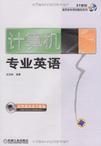计算机专业英语
出版时间:2009-11 出版社:机械工业出版社 作者:吕洪林 页数:210
前言
本书以培养学生的实际技能为目标,具体内容紧跟IT领域新技术的发展,力求提高计算机相关专业学生的英语阅读和翻译能力,使读者能从英文原版资料中汲取知识营养,为目后在工作中熟练阅读英文技术资料、利用英语解决实际问题打下坚实的基础。 本书的内容包括计算机基础知识、计算机硬件、计算机软件、数据库技术、计算机编程、软件工程、计算机网络、多媒体技术、计算机相关行业工作场景及软件外包等。书中节选的材料,不仅涵盖了计算机领域的基础知识、反映IT技术最新的发展方向,还增加了IT工作环境和软件外包等特色内容。 本书选材广泛、内容充实、新颖实用。全书共分10章,每章包括课文、阅读材料、练习、实训及实用技能。课文介绍基础知识及核心技术,阅读材料说明了发展动态。实训包括计算机硬件的操作、软件的安装和卸载、数据库软件的使用、可视化开发工具的使用、利用网络搜索相关信息等。实用技能主要介绍求职简历、计算机硬件说明书及计算机软件开发过程中所需的需求规格说明书、系统设计说明书、测试报告和软件变更说明书的写法等。 本书在编写过程中,得到了赵泉教授的大力支持,毕丛娣教授和王海东教授提出了很多宝贵的意见,李海红老师对全书的语法进行了校对。在此,对这些老师表示衷心的感谢。另外,还要感谢陈广山、郭群、王永刚、裘志华、任昌荣、刘玉江、续蕾、马明、任华新、谢宏武、孙静、张春明、张飞侠等人的热心帮助。 由于作者水平有限,书中难免存在疏漏,恳请广大读者提出宝贵意见。
内容概要
本书全面系统地介绍了计算机相关领域的知识,内容包括计算机基础知识、计算机硬件、计算机软件、数据库技术、计算机编程、软件工程、计算机网络、多媒体技术、计算机相关行业工作场景及软件外包等。 本书选材广泛、内容完整、新颖实用。每章包括课文、阅读材料、练习、实训及实用技能等。实训内容包括计算机硬件的操作、实用软件的使用、数据库软件的使用、利用网络搜索相关信息等。实用技能主要介绍求职简历、计算机硬件说明书及计算机软件开发过程中所需的各种说明书的写法等。 本书既可作为高职高专计算机类专业的专业英语教材,也可作为广大计算机使用者的参考书。
书籍目录
前言Chapter 1 Computer Basics 1.1 What [s a Computer 1.2 Computer Categories 1.3 Reading Material: Personal Computer Systems 1.4 Exercises 1.5 Lab: Operating a Personal Computer 1.6 Practical Skill——如何写英文求职简历Chapter 2 Computer Hardware 2.1 The Components of a Computer 2.2 Input and Output Devices 2.2.1 Basic Input Devices 2.2.2 Display Devices 2.2.3 Printers 2.2.4 Installing Peripheral Devices 2.3 Reading Material: Memory and Storage Devices 2.3.1 Random Access Memory 2.3.2 Storage Devices 2.4 Exercises 2.5 Lab: Leaming about Your Computer 2.6 Practical Skill——如何写英文自荐信Chapter 3 Computer Software 3.1 Software Basics 3.2 Application Software 3.2.1 Document Production Software 3.2.2 Spreadsheet Software 3.2.3 Graphics Software 3.2.4 Educational and Reference Software 3.2.5 Business Software 3.3 Reading Material: Operating System 3.3.1 Operating System Overview 3.3.2 Windows, Mac OS, UNIX, and Linux 3.3.3 Handheld Operating System 3.4 Exercises 3.5 Lab: Installing and Uninstalling Sol.are 3.6 Practical Skill——如何写产品使用说明书的纲要Chapter 4 Database 4.1 Database Concepts and DBMS 4.1.1 Database Concepts 4.1.2 Database Management Systems 4.2 Database Design 4.2.1 Defining Fields 4.2.2 Designing the Interface 4.2.3 Designing Report Templates 4.2.4 Loading Data 4.3 Reading Material: SQL 4.3.1 SQL Basics 4.3.2 Adding Records 4.3.3 Searching for Information 4.3.4 Updating Fields 4.4 Exercises 4.5 Lab: Working with Database Software 4.6 Practical Skill——如何写产品使用说明书的具体内容Chapter 5 Programming Language 5.1 Programming Basics 5.1.1 Computer Programming ……Chapter 6 Software EngineeringChapter 7 Computer NetworksChapter 8 MultimediaChapter 9 Working EnvironmentChapter 10 Outsourcing参考文献
章节摘录
Most people can formulate a mental picture of a compmer, but computers do so many thingsand come in such a variety of shapes and sizes that it might seem difficult to distill their commoncharacteristics into an all-purpose definition. At its core, a computer is a device that accepts input,processes data, stores data, and produces output, all according to series of stored instructions. Computer input is whatever is typed, submitted, or transmitted to a computer system[21. Inputcan be supplied by a person, by the environment, or by another computer. Examples of the kinds ofinput that a computer can accept include words and symbols in a document, numbers for acalculation, pictures, temperatures from a thermostat, audio signals from a microphone, andinstructions from a computer program. An input device, such as a keyboard or mouse, gathers inputand transforms it into a series of electronic Signals for the computer to store and manipulate. In the context of computing, data refers to the symbols that represent facts, objects, and ideas[3].Computers manipulate data in many ways, and this manipulation is called processing. The series ofinstructions that tell a computer how to carry out processing tasks is referred to as a computerprogram, or simply a "program". These programs form the software that sets up a computer to do aspecific task. Some of the ways that computer can process data include performing calculations,sorting lists of words or numbers, modifying documents and pictures, and drawing graphs. In acomputer, most processing takes place in a component called the central processing unit (CPU),which is sometimes described as the computers "brain".
图书封面
评论、评分、阅读与下载
用户评论 (总计0条)
推荐图书
- (特价)收藏家2009年2月总148期
- (特惠价)作品与争鸣2009年第6期总第342期
- (特价)摄影与摄像2009年6月总173期
- 這樣事和誰細講
- 生活之梭(全二册)
- 《现代汉语词典》学术研讨会论文集
- 高一下-新课标培优专项通
- 小金牛幼儿认知抱抱书
- 国外及港台地区社会工作发展报告
- 中国民政年鉴2007(上、下)
- 英国社会工作
- 加拿大社会工作
- 石勒-武乡千古一帝
- 人身权益保护案例选编
- 土地征收补偿分配纠纷案例选编
- 李嘉诚的财富传奇
- 社区党建工作创新研究
- 非政府组织与政府的合作机制
- 突发事件应对的财力保障机制
- 民政政策理论研究优秀论文集
- 剑桥商务英语BEC初级1500高分词表
- 男人
- 女人
- (人教社师范教材中心组编)《心理学》
- 《普通心理学》笔记和习题详解
